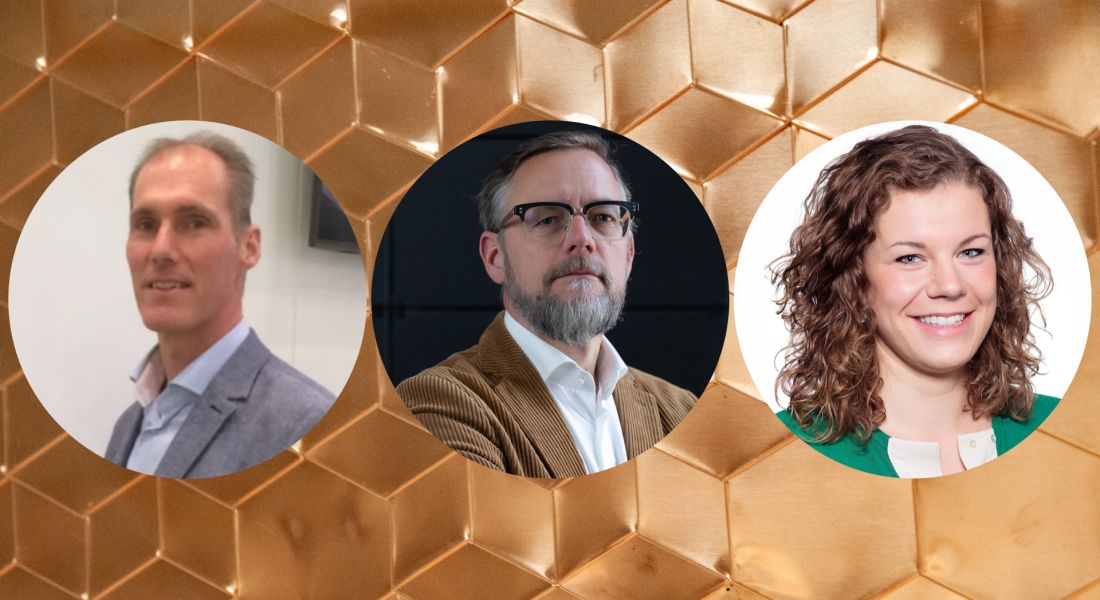Medically approved ceramic material on the Admaflex 3D printing systems
CAM Bioceramics is an ISO 13485:2016 certified supplier of medical grade ceramic materials, supporting Admatec to enable printing medically approved ceramic material on the Admaflex 3D printing systems, opening up opportunities for the medical and dental sectors.
With the introduction of a commercially available Hydroxyapatite slurry printing material for the Admaflex printers, Admatec offers innovative customized solutions to academic medical centers and manufacturers of medical devices throughout the entire process chain of the additive manufacturing of biocompatible and bioresorbable ceramics.
C. Hogeboom, CEO of CAM Bioceramics: “As a supplier for the Orthopaedic and Dental market, CAM Bioceramics acknowledges that 3D Printing will play an increasingly significant role in numerous patient treatment plans. Calcium Phosphate based bone reconstructions will play an important part in this next generation medical device solutions due to its proven biocompatibility. As one of the market leaders in this area, CAM Bioceramics actively partners with 3D print experts and promotes the evolution of 3D printed solutions”
Giuseppe Cama, Head of Innovation & Science at CAM Bioceramics adds to this: “Engineering know-how, flexibility and ease of use of the Admatec system have convinced CAM Bioceramics to collaborate with Admatec in this development thus enabling other medical device companies to take full advantage of this ‘turnkey’ solution. Customization to optimize patient outcomes can easily be achieved, supported by the physical proximity of the two companies.”
Why use 3D printed ceramics?
Advanced ceramics are used more and more for medical applications, such as surgical instruments and patient-specific implants. Patient-specific implants made of biocompatible and bioresorbable ceramics are used for cranio-maxillofacial and hemi-maxillary implants.
These implants will be reabsorbed by the body and will be replaced by native bone tissue, meaning that the implant does not need to be removed once the healing process is finished, eliminating the need for otherwise necessary removal of autologous bone, which is often associated with severe pain and complications. In comparison to tricalcium phosphate, hydroxyapatite takes far more time to be absorbed into the body, therefore giving the body more time to heal.
The use of additive manufacturing with bioresorbable ceramics
Additive manufacturing allows to produce patient-specific implants: by scanning the current situation of the bones of the patient, an optimized geometry for the implant can be defined. Additive manufacturing allows for the production of interconnected scaffolds with defined geometries and sizes. A combination of dense and porous structures in bone tissue engineering facilitates the ingrowth of bone from adjacent tissues.
Using Hydroxyapatite, we can manufacture patient-specific, bioresorbable implants, which have defined pore structures and geometries. Combinations of functional graded ceramic materials, such as dense and porous structures in a single hemi-maxillary bone-like structure, have been printed successfully with help of the lithography based additive manufacturing technology provided by Nano Dimension’s Admaflex 3D printers.
What is possible with Admaflex DLP 3D printing?
Using the tool-free Admaflex DLP 3D print technology, it is possible to manufacture highly complex geometries, channels, lattice and honeycomb structures with features and wall thicknesses in the range of 100 µm. The Admaflex 3D print technology uses the material much more efficient compared with conventional manufacturing technology such as milling.
Unlike injection molding, there is no mold needed, so fast and cost-effective development and production of components for medical devices, surgical instruments and patient-specific implants is possible. The batch-orientated printing process has been optimized for speed and build volume. With currently available build volumes of up to 238 x 192 x 500 mm, on one build platform, relatively big implants can be produced.
In case of small implants, many different geometries can be 3D printed simultaneously with the Multi-part printing software, which allows to optimize the production settings of each part individually. Another advantage of 3D printing is the high-precision and reproducible micro porosity in connection with a defined surface quality, which significantly improves for example the cell adhesion.
What does the future hold for multi-material DLP 3D printing?
Recent developments are focusing on Multi-materials DLP 3D printing, for example for combination implants for the lower jaw, where a combination of Hydroxyapatite and Zirconia can be used. In case of large bone defect due to a severe trauma or bone tumor, the bone itself is not able to heal the defect without appropriate measures.
A possible solution is a cage made of high-strength zirconia or other high strength ceramic, which gives support during the healing phase. The inner volume of the implant could be made of bioresorbable ceramic such as hydroxyapatite. The zirconia cage can be left in place due to its outstanding biocompatibility.
The hydroxyapatite can be resorbed into the cells and replaced by newly formed bone. The combination of design freedom and the ability to use multiple ceramic materials in DLP 3D printing open up many new applications for permanent implants.
About CAM Bioceramics
CAM Bioceramics in Leiden is an ISO 13485:2016 compliant supplier of medical grade ceramic materials. The company devotion to excellence and unstoppable passion for science, makes CAM the company of choice for cutting edge calcium phosphate solutions and services worldwide. As a dedicated contract development and manufacturing organization, CAM Bioceramics has set up robust processes to manufacture an extensive portfolio of orthobiologic calcium phosphates. CAM Bioceramics is able to develop, manufacture and package orthobiologic calcium phosphate powders, granules, blocks, which are delivered to many industry leaders in the orthopedic, dental and aesthetic sectors. Admatec Europe uses Hydroxyapatite from CAM Bioceramics in the slurry for the Admaflex 3D printing systems.
For more information, please contact us or give us a call at +31 85 0777 101.
